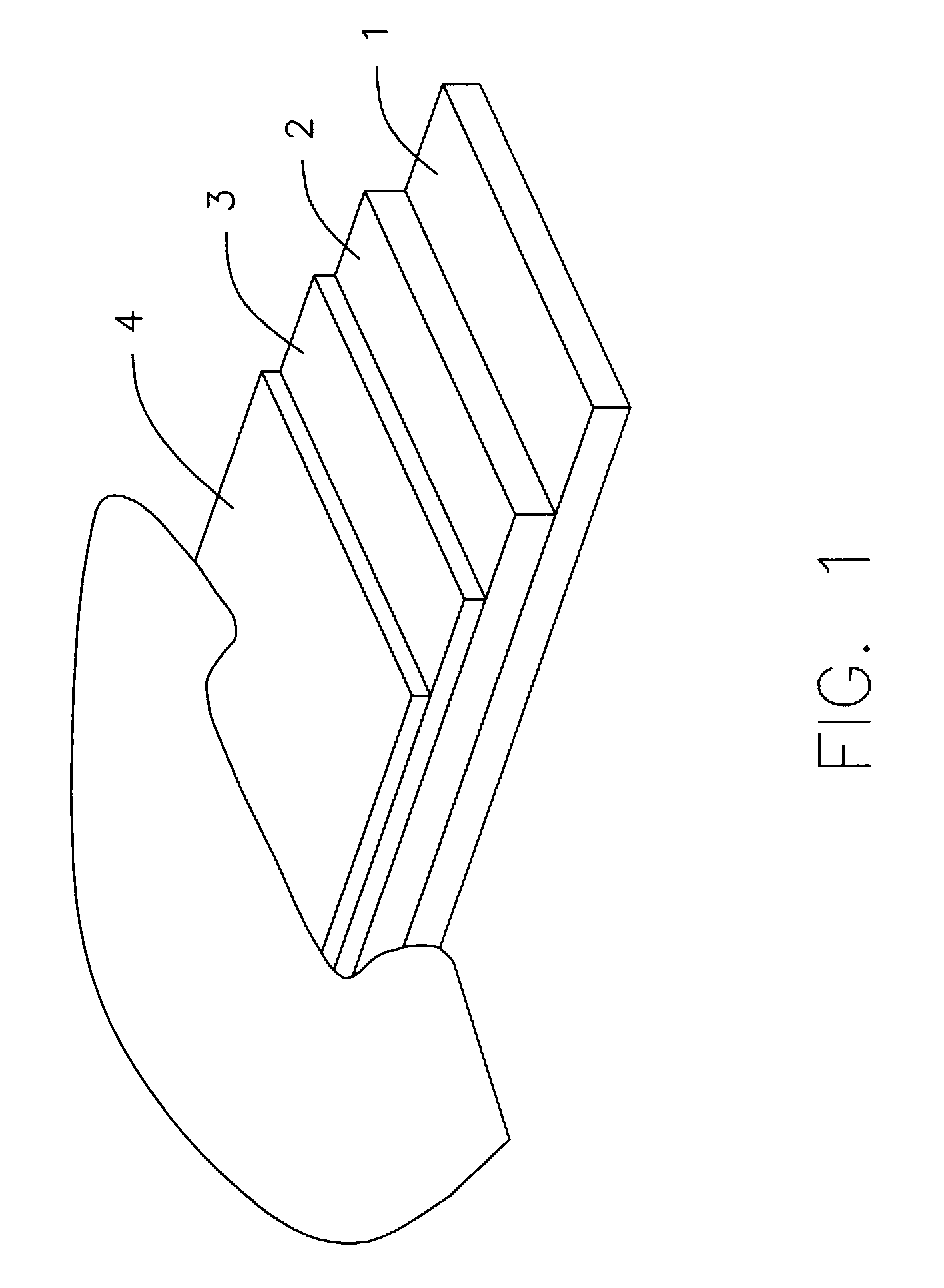Superconducting wire with low ac losses
a superconducting wire and low loss technology, applied in the direction of superconductors/hyperconductors, superconductors/coils, magnetic bodies, etc., can solve the problems of limiting the economic justification of superconductors, unable to apply, and loss during field changes, etc., to achieve the effect of small width
- Summary
- Abstract
- Description
- Claims
- Application Information
AI Technical Summary
Benefits of technology
Problems solved by technology
Method used
Image
Examples
Embodiment Construction
[0041]FIGS. 4 and 5 show two examples of the superconducting wire 7 of the present invention.
[0042]As can be seen in FIGS. 4 and 5 the superconducting wire 7 has essentially a round (tubular) shape with the HTS-layer 3 being provided on the outer surface. The HTS layer 3 is patterned into a screw line snaking around the length of superconductor wire 7.
[0043]The width and twist pitch of the spiral pathway can be optimized according to the need of the respective application.
[0044]As shown in FIG. 6 the HTS-layer 3 can be patterned into one or more parallel lanes 15 snaking around the length of the wire side by side.
[0045]According to the present invention very small widths of the lanes are obtainable.
[0046]By the provision of individual lanes the HTS superconductor is separated into smaller filaments wherein for reducing AC losses adjacent filaments (e.g. lanes) are not in contact with each other. Consequently, a gap 16 is formed between adjacent lanes 15.
[0047]For the present inventi...
PUM
| Property | Measurement | Unit |
|---|---|---|
| frequency | aaaaa | aaaaa |
| frequency | aaaaa | aaaaa |
| temperature | aaaaa | aaaaa |
Abstract
Description
Claims
Application Information
 Login to View More
Login to View More - R&D
- Intellectual Property
- Life Sciences
- Materials
- Tech Scout
- Unparalleled Data Quality
- Higher Quality Content
- 60% Fewer Hallucinations
Browse by: Latest US Patents, China's latest patents, Technical Efficacy Thesaurus, Application Domain, Technology Topic, Popular Technical Reports.
© 2025 PatSnap. All rights reserved.Legal|Privacy policy|Modern Slavery Act Transparency Statement|Sitemap|About US| Contact US: help@patsnap.com



